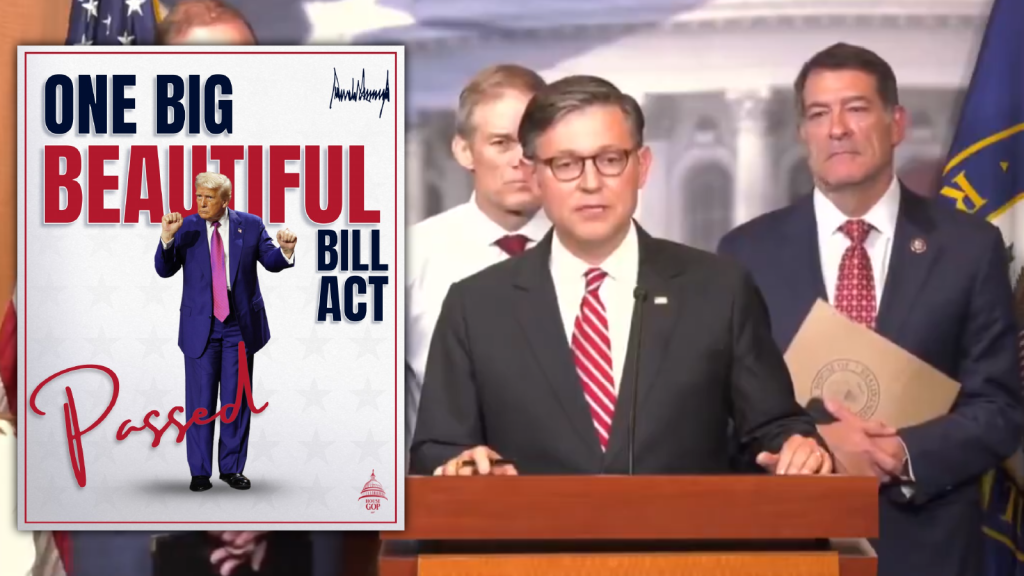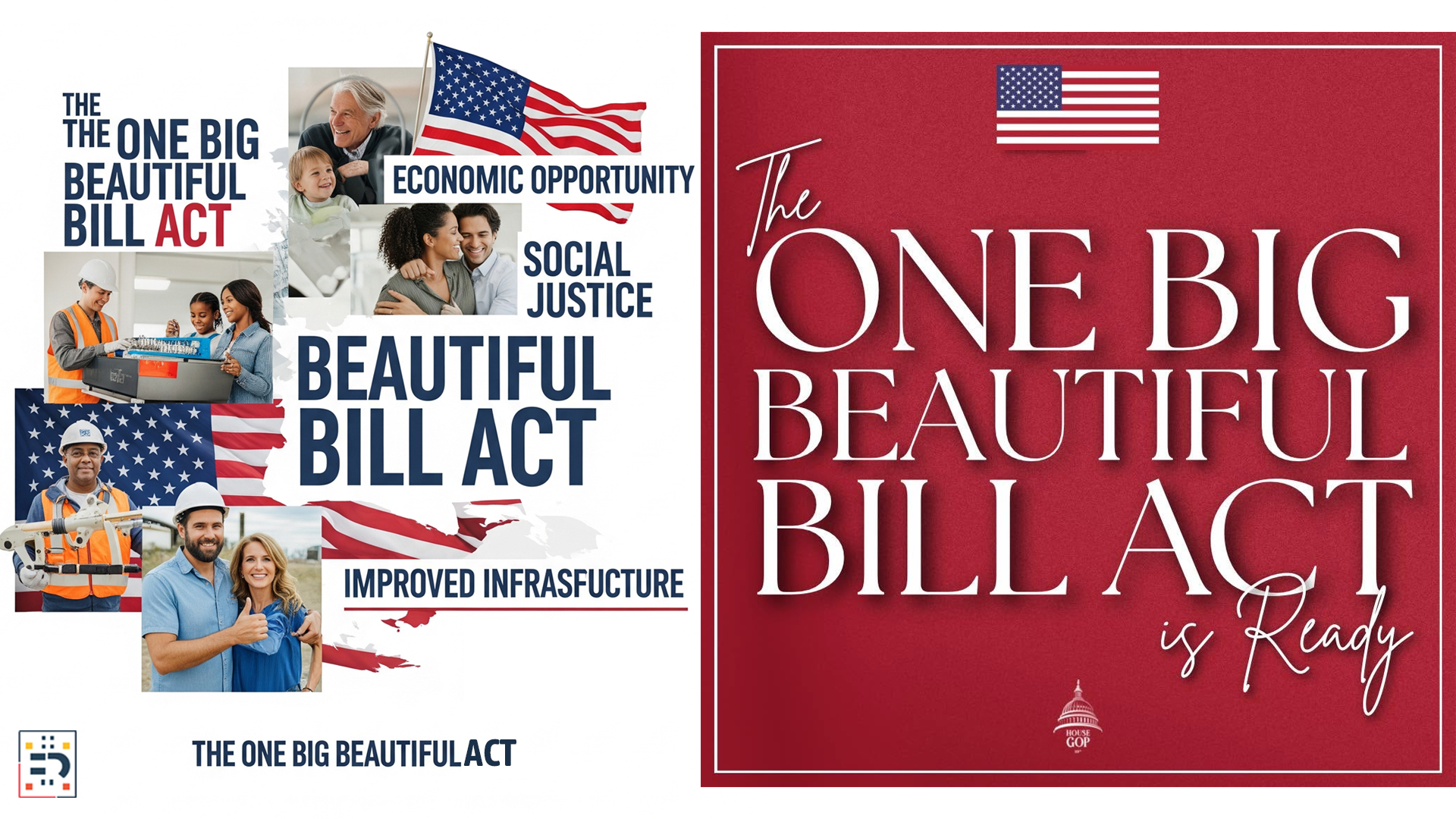A Legislative Giant Reshapes America’s Future
After weeks of intense negotiations and a marathon 49 consecutive Senate votes, President Donald Trump’s signature domestic policy legislation—the One Big Beautiful Bill Act (OBBBA)—has cleared another major hurdle in its path to becoming law. This budget reconciliation package, which passed the Senate on Tuesday afternoon with Vice President JD Vance casting the decisive tiebreaking vote, represents one of the most ambitious attempts to reshape American fiscal policy in decades.
The legislation leverages the budget reconciliation process, a legislative tool that can be used by the majority party in Congress to advance their agenda with only a simple majority in the Senate, allowing Republicans to bypass traditional filibuster rules and advance key components of the Trump administration agenda without Democratic support.

The Numbers That Tell the Story
The scope of the One Big Beautiful Bill Act is staggering. According to budget analysts, the legislation would add $2.4 trillion to primary deficits over the coming decade, with total debt increasing by $3.0 trillion when interest costs are included. These figures have sparked intense debate about the long-term fiscal health of the nation, with supporters arguing that the economic growth generated by the bill’s provisions will offset these costs, while critics warn of unsustainable debt levels.
The bill’s formal designation as H.R.1 in the 119th Congress signals its priority status for the Trump administration, which has dubbed it a “once-in-a-generation opportunity to cement an America First agenda of prosperity, opportunity, and security into law.”
Healthcare at the Center of Controversy
Perhaps no aspect of the One Big Beautiful Bill Act has generated more heated discussion than its healthcare provisions. The legislation includes significant changes to Medicaid and Medicare that have healthcare advocates sounding alarm bells across the country.
Rural Hospital Crisis: Research from the UNC Cecil G. Sheps Center has identified more than 300 rural hospitals at risk of closure due to proposed cuts in the bill. These facilities, often serving as the only healthcare option for miles in rural communities, face an uncertain future as federal funding streams face reduction. The potential closures would disproportionately impact rural Americans, many of whom already travel significant distances for medical care.
Medicaid Work Requirements and Cuts: The bill’s Medicaid provisions create what analysts describe as clear “winners and losers” across different states and demographics. Republicans’ proposals to change the public health insurance program for low-income and disabled Americans could amount to more than $2 trillion of cuts over the next decade, according to NPR analysis. Some states may see increased flexibility in administering their Medicaid programs, while others face significant funding reductions that could affect coverage for millions of Americans.
Medicare Changes: The legislation also includes substantial Medicare reforms that would affect millions of seniors. These changes come alongside existing 2025 Medicare updates, including Part B premiums increasing nearly 6 percent, to $185 for most beneficiaries.
Related Resources:
- Tracking Medicaid Provisions in the 2025 Budget Bill
- Medicare Changes in the 2025 Reconciliation Bill
- Healthcare Industry Lobbying Priorities for 2025
Tax Provisions Spark Business Interest and Concern
The legislation includes what critics have dubbed a “revenge tax” provision—Section 899—which survived from the House version through the Senate Finance Committee’s draft modifications. This provision has captured the attention of tax attorneys and business groups, who are closely monitoring its potential impact on corporate tax strategies.
Tax Cuts and Jobs Act Extension: The bill would extend and expand upon many of the tax cuts Republicans passed in 2017 as part of the Tax Cuts and Jobs Act. This represents a key component of the Trump administration’s economic agenda, with proposals to lower corporate tax rates to 15% and promote onshoring to boost the US economy.
America First Trade Policy: The legislation incorporates Trump’s “America First” trade policy priorities, including measures to promote domestic manufacturing, expand tariffs, and strengthen economic competitiveness against global rivals.
The bill also incorporates various other tax changes that could affect everything from individual tax rates to business deductions, though the full scope of these modifications remains a subject of ongoing analysis as lawmakers and stakeholders digest the legislation’s complex provisions.
Related Resources:
Unexpected Additions and Political Maneuvering
In a move that surprised many observers, the Senate Committee added the SHORT Act to the One Big Beautiful Bill, expanding its scope beyond fiscal policy into areas of regulatory reform. This addition demonstrates how major reconciliation bills often become vehicles for a wide range of policy priorities.
The political drama surrounding the bill’s passage was evident even in its naming. Senate Majority Leader Chuck Schumer reportedly stripped the “big, beautiful bill” designation from Trump’s spending package in the final moments before passage, though the legislation retained its substantive content.
The Road to Implementation
With Senate passage secured by the narrowest possible margin—no Democrats crossed the aisle to support the legislation, and three Republicans (Rand Paul of Kentucky, Susan Collins of Maine, and Thom Tillis of North Carolina) voted against it—the One Big Beautiful Bill Act now faces the complex process of implementation.
The legislation includes delayed implementation provisions for certain programs, particularly those related to state compliance with federal requirements. For example, states with high payment error rates in fiscal year 2025 may see implementation of certain provisions delayed until fiscal year 2029, providing additional time to meet federal standards.
Voices from Across the Political Spectrum
The bill’s passage has generated strong reactions from both supporters and critics. The White House has characterized it as a transformative piece of legislation that will deliver prosperity and security to American families. Officials describe it as the culmination of President Trump’s domestic policy vision, designed to stimulate economic growth while maintaining America’s competitive edge globally.
Democratic leaders, meanwhile, have condemned the legislation as fiscally irresponsible and harmful to vulnerable populations. They argue that the cuts to healthcare and social programs will disproportionately impact working families and rural communities, while the tax provisions primarily benefit wealthy individuals and corporations.
Healthcare advocacy groups have been particularly vocal in their opposition, with organizations like the Center for Children and Families warning that the bill will create significant budget hits for families who rely on federal healthcare programs.
Looking Ahead: Implementation Challenges
As the One Big Beautiful Bill Act moves toward final passage and implementation, several key challenges lie ahead. States will need to adapt their systems to comply with new federal requirements, often within tight timeframes. Healthcare providers, particularly those in rural areas, will need to develop strategies to maintain operations despite reduced federal funding.
The business community continues to analyze the tax provisions to understand their full implications, while advocacy groups are preparing legal challenges to certain provisions they view as harmful to their constituencies.
A Defining Moment
The One Big Beautiful Bill Act represents more than just another piece of legislation—it embodies a fundamental disagreement about the role of government in American life. Its supporters see it as a necessary course correction that will unleash economic growth and reduce regulatory burdens. Its critics view it as a dangerous retreat from federal commitments to healthcare and social welfare that have defined American policy for decades.
As the legislation moves through its final stages, its ultimate impact will depend not just on the text of the law itself, but on how effectively it can be implemented across a complex federal system. The success or failure of the One Big Beautiful Bill Act may well define the political legacy of the current administration and shape American policy debates for years to come.
The American people now wait to see whether this ambitious legislative gamble will deliver the prosperity and security its proponents promise, or whether its critics’ warnings about fiscal irresponsibility and social harm will prove prophetic. In either case, the One Big Beautiful Bill Act stands as one of the most consequential pieces of domestic legislation in recent American history.


